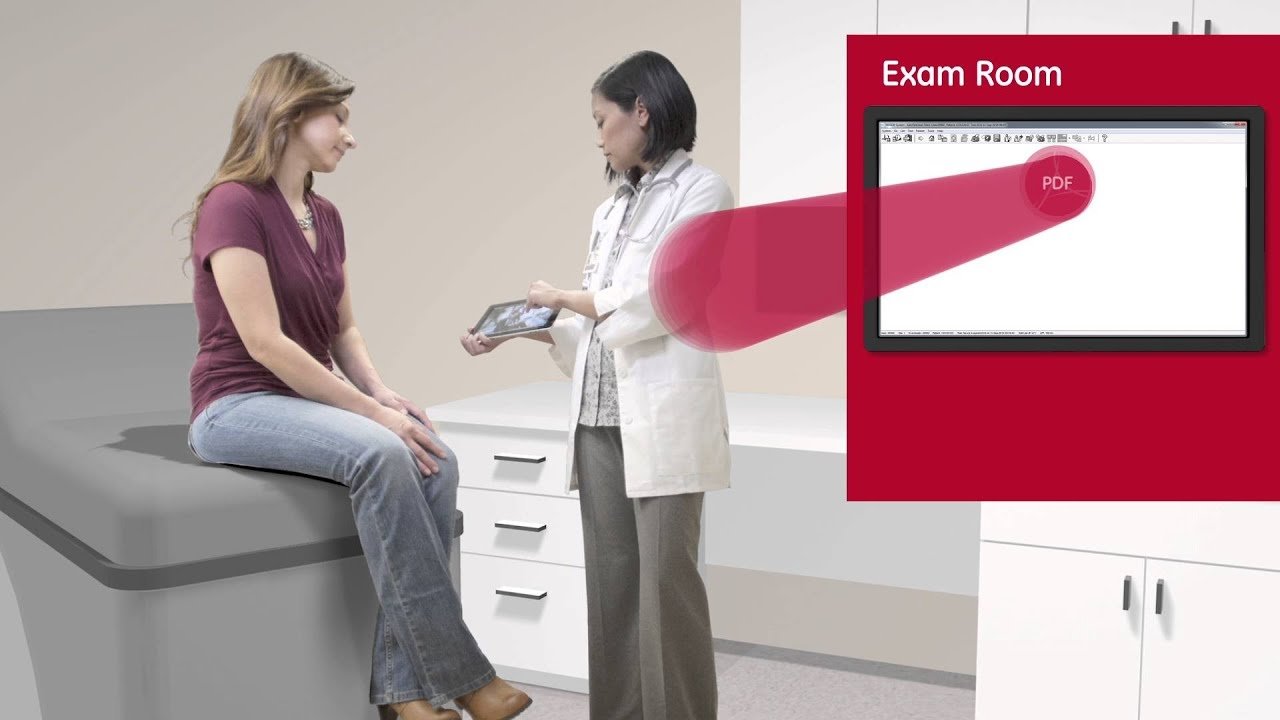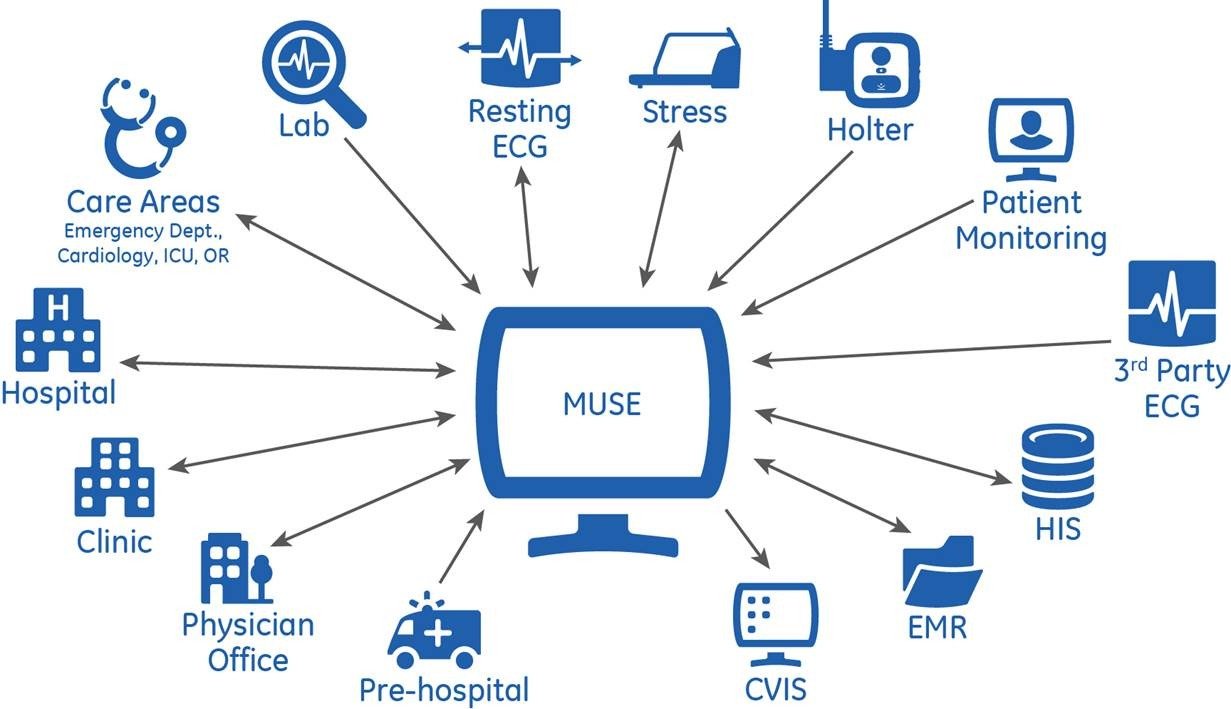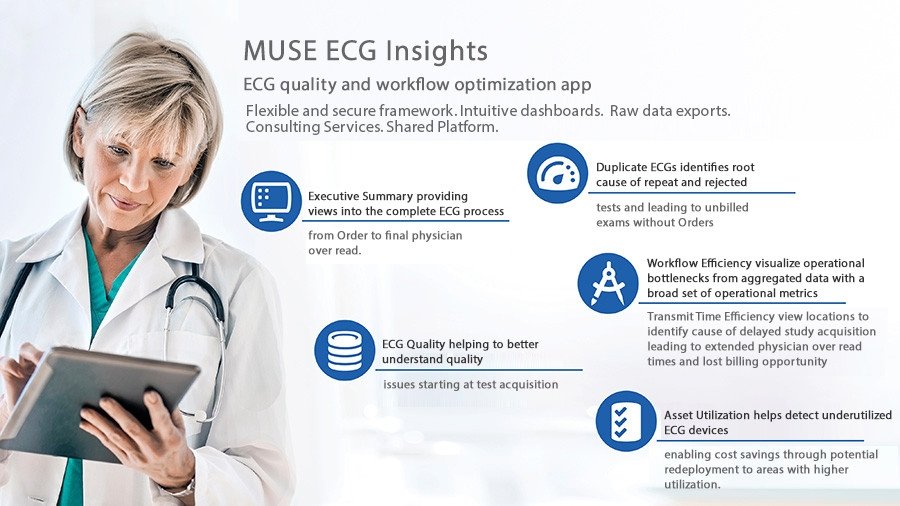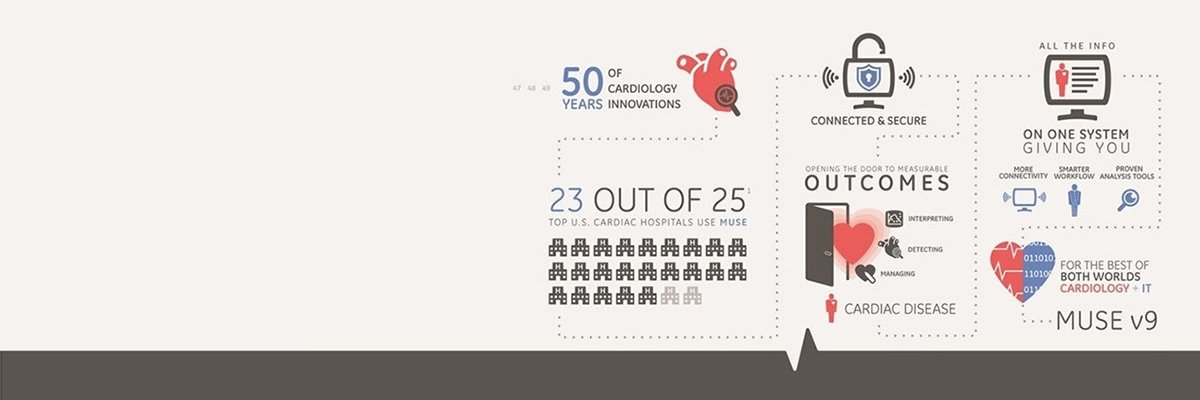MUSE
MUSE™ v9 takes cardiology information systems to the next level with expanded connectivity tools, smarter workflows, enhanced data security, and privacy capabilities. The new functionality and upgrades to the MUSE system are designed to improve the overall cardiovascular care process - for cardiologists, IT administrators, and patients.
Description
MUSE v9 offers the best of both worlds through many clinical and IT benefits
- Helps speed the decision process with measurements and analysis tools to support cardiac care
- Bridges the communication gap between vendors, modalities, clinics, hospitals, care areas and your enterprise
- Keeps your data secure while supporting easy access
- Maximizes the clinical benefits MUSE provides and utilizes your existing devices
- Integrates with active directory, HIS, EMR, and Logging / Audit systems to centralize user authentication and login as well as enhance your auditing capabilities
- Enables DICOM connectivity to acquire, communicate and store across platforms including Vendor Neutral Archive (VNA)
- Provides workflow flexibility for data acquisition, barcoding at the device for ADT and orders download, helping to reduce errors
Connectivity
MUSE eDoc Connect provides an open and direct multi-modality, multi-vendor solution.
- Easy integration of non-GE technologies
- Direct connectivity to receive and store reports from other network-connected devices such as stress testing equipment, electrocardiographs, wearables, pulmonary function equipment and more
- Patient information and clinical resulsts available in a single view
- Built-in interface removes the burden of IT maintaining additional interfaces
MUSE DICOM Connect provides the direct link between the resting ECG data acquisition and DICOM protocol based systems which could include EMRs, PACS and RIS.
- MUSE receives DICOMTM modality worklists and converts them to complete an efficient resting ECG workflow for the cardiology department
- Critical information can be shared with the imaging/ radiology workstation to help increase the speed and accuracy of cardiac diagnosis
- Maintain a diagnostic ECG expert system to edit, confirm and route ECGs without compromising workflow
- Send DICOM-formatted resting ECGs to a PACS or VNA (vendor neutral archive) on demand
Connectivity
Description
Enhanced System Security and Privacy
In today's unpredictable and complex environment, healthcare providers must ensure system integrity and regulatory compliance.
MUSE A/D Connect
- Provides integration with active directory solutions for a more simplified and secure login process
- Enables each authorized user to have a single sign on at the enterprise level
- Establishes centralized activation/deactivation process, which can be configured to use LDAP groups for user accounts, or use existing functionality to create MUSE users
- Eliminates the need for administrators to maintain separate MUSE system user names and passwords
- Saves time and simplifies IT security, user account management,and hospital network administration
Audit and Data Logging
The enhanced audit and data logging tools available in the MUSE system is essential for compliance and quality improvements.
- Comprehensive audit component tracks by whom and when any patient record is searched, accessed, and viewed, supporting the facilities ability to satisfy the HIPAA (Healthcare Insurance Portability and Accountability Act) requirement
- To maintain patient privacy, data access logs record details (e.g. user, workstation, time stamp) any time a test was opened or printed
- Includes accessing and exporting error logs to third party tools, enabling service personnel to better understand the problems and/or verifying user functionality





